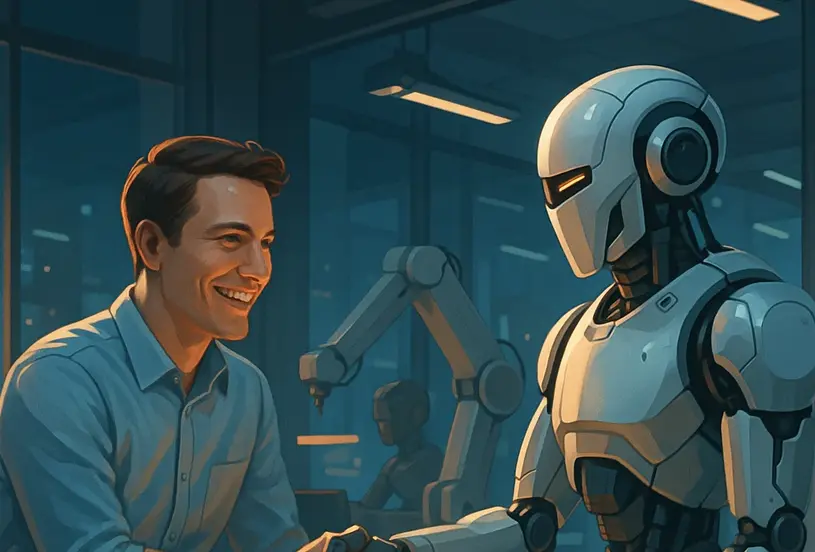The Robots Are Here, Chapter 4: The Human Advantage
In our final chapter, we’ll tie everything together with a simple truth: in an age of automation, the most human company wins.
- The Robots Are Here, Chapter 4: The Human Advantage - October 27, 2025
- AI in Hiring: WhatJobs COO Adil Rehman Separates Hype from Reality - October 21, 2025
- The Robots Are Here, Chapter 3: The Human Filter - October 20, 2025
In the first two chapters of this series, we’ve focused on how to react to the new reality of hiring. We defined the problem of “AI noise” and discussed the signals to look for to identify a genuinely interested human candidate.
But what if we could reduce the noise from the very beginning?
The single most overlooked tool in your hiring toolkit is the job description itself. For years, we’ve been taught to write them like technical manuals—a dry list of responsibilities and keyword-heavy requirements. The unintended consequence is that we’ve created the perfect bait for the very AI bots we’re trying to avoid.
If you want to attract a human, you need to write for one. Your job description isn’t just a list of tasks; it’s your first line of defense. It’s your human filter.

Building a Process Based on Respect
Think about the journey we’ve mapped out in this series:
- Writing a “human” job description (Chapter 3) isn’t just a tactic to filter out bots; it’s how you start the conversation with clarity and purpose. You are showing respect for the candidate’s time by telling them why the role matters.
- Looking for “human signals” (Chapter 2) isn’t just about spotting clues; it’s about learning to listen. You are rewarding the candidates who put in the effort to have a genuine dialogue.
- Solving the “resume black hole” is the most crucial part of the conversation. Leaving a candidate in silence after they’ve applied is the equivalent of walking away mid-sentence. It’s disrespectful, and the best people will remember it.
In a world where candidates feel like they’re interacting with impersonal machines, the company that treats them with respect and transparency has an almost unfair advantage.
The True Role of Technology
This doesn’t mean we should abandon technology. It means we must use it for its true purpose: to handle the mechanics of the process, so that we, the humans, can focus on the connection.
A great hiring platform should use AI to:
- Eliminate the noise so you can focus on the real conversations.
- Automate the repetitive tasks (like scheduling and confirmations) so you don’t have to.
- Provide the data and insights you need to make smarter, faster decisions.
Good technology doesn’t replace the human; it liberates the human to do what they do best: exercise judgment, build rapport, and determine if someone is a true fit for the team’s culture.

Your Ultimate Advantage
As a small or medium-sized business, you cannot outspend the giants. You cannot out-recruit them with massive HR teams. But you can absolutely out-human them.
You can create a hiring process that is faster, more transparent, and more respectful than any mega-corporation. You can make candidates feel seen and valued from the very first click.
In an age where everything is becoming automated, your humanity is your most powerful, defensible, and profitable asset.
Thank you for joining me for this series.
All the best,
Alexander Paterson
Founder & CEO
